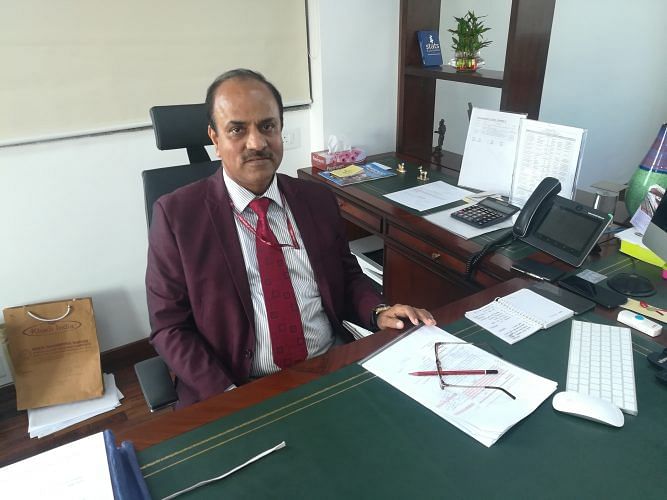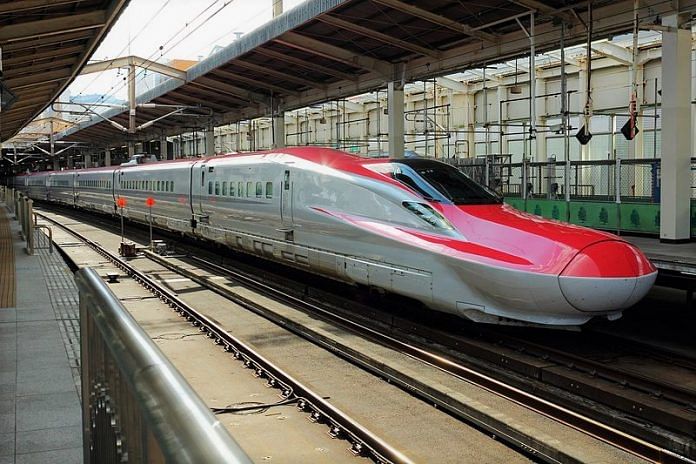Achal Khare, MD of new company set up to build and run bullet train, says rest of this year will go in land acquisitions and awarding contracts.
New Delhi: Construction work on Prime Minister Narendra Modi’s dream project, the Ahmedabad-Mumbai bullet train, will begin in 2019. Awarding contracts and land acquisition are planned to be completed this year, said Achal Khare, managing director of the National High Speed Rail Corporation Limited (NHSRCL).
The foundation stone for the project was laid on 14 September 2017.
“It’s a new technology, and a lot of paper work, design work, and finalisation of specifications has to be done,” Khare said in an exclusive interview to ThePrint.
“We currently have 55 to 60 regular employees, which could go up to 200 to 225 by this year-end.”
The NHSRCL is aiming to complete the Rs 1.08 lakh-crore project by 15 August 2022. The Japanese government is providing a 50-year loan of Rs 88,000 crore at an interest rate of 0.1 per cent.
The high speed trains would be based on Japan’s Shinkansen or bullet train technology.

Requirements for the project
The NHSRCL is a joint venture between the Ministry of Railways, which owns a 50 per cent stake, and the state governments of Maharashtra and Gujarat, which own 25 per cent each. The company is responsible for the execution and operation of the bullet train project.
The project is set to involve 303 villages in 12 districts in Gujarat and Maharashtra.
“We have already submitted land acquisition requests to both the state governments. We are planning to award the work contract by this year. Some work may start this year too,” Khare said.
The current land acquisition plan involves land required only for the train corridor itself. “At a later stage, we will see if an industry or market can be developed along the corridor,” he said.
Besides, a high speed training institute is to be established in Vadodara, for which work tenders were floated in November last year. The institute is to be ready by December 2020.
Once construction is completed, around 4,000 new employees will be needed to run the train service.
“We are planning to send 300 to 350 people to Japan for training for a period varying from three months to one year,” said Khare. “By December 2020, our institute will be ready with all the equipment and facilities, and the rest of employees will be trained here.”
Why Shinkansen?
Asked why the Shinkansen technology had been chosen, Khare replied: “Shinkansen is the oldest (high-speed train) technology. In 52 years, they have a track record of no fatality, while in all other available technologies, there have been serious accidents, including the Chinese one.”
“This is a system which has the best record of punctuality, with delays of less than a minute over a period of one year,” he said.
In addition, the Ahmedabad-Mumbai bullet train will be equipped with earthquake warning systems, with trains stopping minutes before an earthquake hits.
On the high project cost
So far, the NHSRCL has received Rs 650 crore as equity investment from the central and state governments, of which around Rs 80 crore has been spent.
Asked about the high cost of the project, Khare explained: “When China built its first high speed train corridor in 2008, the cost was $31 million per kilometre. In the US, it was around $54 million per kilometre. We are currently doing it at $33 million per kilometre. I don’t understand why everyone is calling the project costly.”
“Of course, China has been able to bring the cost down by economy of scale. If you expand from 500 km to 10,000 km, the economy of scale would work.”
“The soft loan offered by the Japanese government was like icing on the cake,” he added. “The loans they offer under Official Development Assistance (ODAs) have much higher interest rates than what they have offered for the project.”
On feasibility
“Let’s be very clear. High speed trains are not going to replace the traditional railways. However, experience says that up to a distance of 1,000 km, people prefer high speed trains, as the journey would take just about three and a half hours,” said Khare. “The preference is higher if the travel time goes down further.”
Based on the high speed passenger load in Europe, China and other countries, Khare explained that for a three-hour traveling distance, 70 per cent of people travelling between two points would prefer the high-speed train option. This increases to 80 per cent for a two-hour time period.
“The nearly 500 km Ahmedabad-Mumbai journey would be completed in two hours and seven minutes. That would make it completely worthwhile for travellers between the two cities,” he added.
On the expected high fare
“On the basis of our early estimate, we have worked out the fare to be Rs 3,000, 1.5 times higher than the current Ahmedabad-Mumbai AC train fare,” said Khare.
“The airfare between the two cities averages around Rs 4,000, if one discounts promotional fares. I really don’t know on what basis people are saying it would be expensive.”




Metro train’s construction is still going on and it may not be completed before 2019 so hope for the best !
This is called ur inefficiency ur beauracrazy ur stupidity project foundation stone 2017 started 2019 and completed by 15 Aug 2022 this is total stupidity,why not 2018 started completed 2021